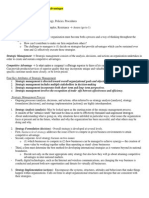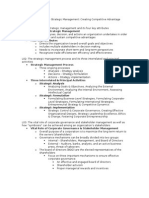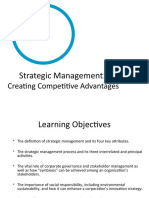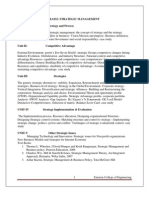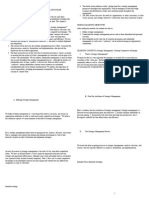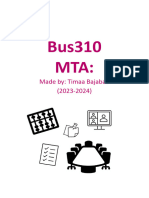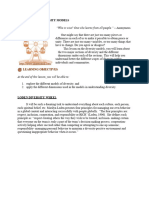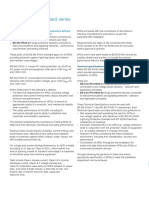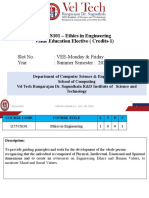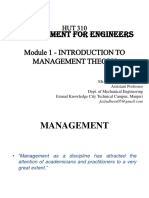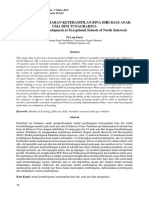0% found this document useful (0 votes)
11 views6 pagesChapter 1 Notes
Chapter 1 discusses the importance of strategic management, emphasizing the need for a guiding policy and coherent actions to address competitive challenges. It highlights the Red Queen Effect, stakeholder analysis, and corporate social responsibility as key components in achieving sustainable competitive advantage. The chapter concludes with the significance of understanding stakeholder interests and the strategic management process to enhance organizational performance.
Uploaded by
allachka2001Copyright
© © All Rights Reserved
We take content rights seriously. If you suspect this is your content, claim it here.
Available Formats
Download as DOCX, PDF, TXT or read online on Scribd
0% found this document useful (0 votes)
11 views6 pagesChapter 1 Notes
Chapter 1 discusses the importance of strategic management, emphasizing the need for a guiding policy and coherent actions to address competitive challenges. It highlights the Red Queen Effect, stakeholder analysis, and corporate social responsibility as key components in achieving sustainable competitive advantage. The chapter concludes with the significance of understanding stakeholder interests and the strategic management process to enhance organizational performance.
Uploaded by
allachka2001Copyright
© © All Rights Reserved
We take content rights seriously. If you suspect this is your content, claim it here.
Available Formats
Download as DOCX, PDF, TXT or read online on Scribd
/ 6




